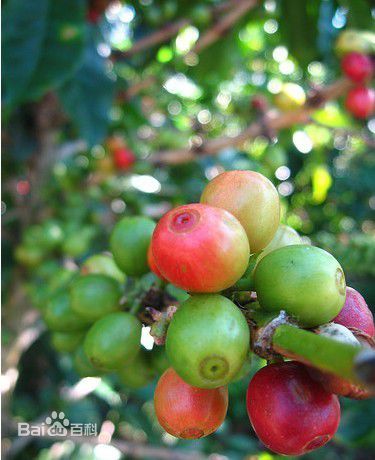Vietnamese Coffee newly popular Vietnamese Coffee
Coffee tree is a small evergreen tree of Rubiaceae. Coffee for daily consumption is made from coffee beans combined with various cooking utensils, and coffee beans refer to the nuts in the fruit of coffee trees, which are then baked in an appropriate way. The taste of a standard cup of coffee should not be bitter, and a qualified barista will strictly carry out every step when making coffee. Finally, the coffee presented to the guests will show varying degrees of sweetness, acidity, mellow thickness or cleanliness in the taste.
Vietnam
Today's production power, tomorrow's production giant.
Perhaps under the influence of French colonial rule, coffee grown in Vietnam has a French flavor. Arabica coffee was first brought to Vietnam by French missionaries. More than 400,000 coffee trees were introduced to Vietnam from 1865 to 1876 and were planted near Tonkin Bay, mostly Java or bourbon varieties.
At present, Vietnam's coffee production is growing. Among Vietnam's new export products, tea ranks first and coffee ranks second. The main varieties produced are Robbite coffee beans, which exported 66000 bags in 1980 and soared to more than 200,000 tons in 1994. 96% of Robert's coffee comes from small farms, but some state-owned farms also grow coffee trees.
The yield of coffee in Vietnam is as high as 950 kilograms per hectare, and many newly planted coffee trees are invested by the Japanese.
Two years ago, I read a survey report that Vietnam has overtaken Colombia in coffee bean production, ranking second in the world after Brazil. But the trees planted are Robusta trees, and there is still a big gap between the quality of coffee beans and countries like Colombia and Brazil.

Important Notice :
前街咖啡 FrontStreet Coffee has moved to new addredd:
FrontStreet Coffee Address: 315,Donghua East Road,GuangZhou
Tel:020 38364473
- Prev

Is there any legend about the history of coffee trees? can Robasta roast deeply?
There are many legends about the discovery of coffee. There is a legend that in the 13th century, there was a prince in Ethiopia who found that his camel loved to eat a small oar fruit on a bush, and he was very excited and energetic after eating it. So he also picked some small berries to taste, and finally discovered this refreshing coffee drink. Another legend is that one day in 500 BC
- Next

Coffee bean treatment Italian coffee grindability
In the process of washing, the peel and pulp of the fruit are treated with a special desizing machine and the coffee beans are peeled off. The coffee beans then enter the fermentation tank for fermentation treatment so that the mucous membrane is no longer sticky. The sugars in the mucous membrane are decomposed during fermentation. Depending on the fermentation method, the fermentation time is usually 12 hours to 6 days (some growers use the watering system to ferment coffee beans. This kind of square
Related
- Does Rose Summer choose Blue, Green or Red? Detailed explanation of Rose Summer Coffee plots and Classification in Panamanian Jade Manor
- What is the difference between the origin, producing area, processing plant, cooperative and manor of coffee beans?
- How fine does the espresso powder fit? how to grind the espresso?
- Sca coffee roasting degree color card coffee roasting degree 8 roasting color values what do you mean?
- The practice of lattes: how to make lattes at home
- Introduction to Indonesian Fine Coffee beans-- Java Coffee producing area of Indonesian Arabica Coffee
- How much will the flavor of light and medium roasted rose summer be expressed? What baking level is rose summer suitable for?
- Introduction to the characteristics of washing, sun-drying or wet-planing coffee commonly used in Mantenin, Indonesia
- Price characteristics of Arabica Coffee Bean Starbucks introduction to Manning Coffee Bean Taste producing area Variety Manor
- What is the authentic Yega flavor? What are the flavor characteristics of the really excellent Yejasuffi coffee beans?

